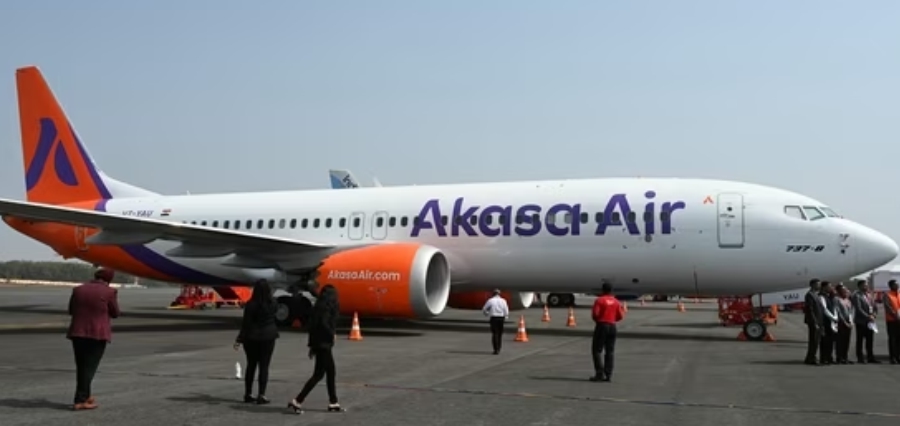The contract for the jumbo jet is a significant victory for Boeing in the narrowbody Indian market, which has hitherto been dominated by Airbus aircraft.
Yesterday at Wings India, the eagerly expected “triple digit” order from Akasa Air was finally signed. Boeing and Akasa Air jointly announced the signing of the 150-aircraft order.
This occurs against the backdrop of yet another wave of controversy surrounding the MAX, as the MAX 9 is still being investigated in relation to the Alaska Airlines incident, in which a door was lost while the aircraft was in flight. There are presently 22 aircraft in Akasa Air’s fleet; 21 are MAX 8, and one is the high density MAX 8-200.
From the earlier order, the airline is still expecting the delivery of 54 aircraft. There are now 204 aircraft that have not yet been delivered to Akasa Air.
This is a significant victory for Boeing since it allows it to gain more ground in India’s narrowbody market, which has hitherto been dominated by Airbus. Less than 100 Boeing narrowbodies were operating in India following the demise of Jet Airways, as a result of SpiceJet’s ongoing financial problems and Air India Express’s failure to expand its fleet in anticipation of privatization. Although SpiceJet’s MAX is still on order, no deliveries have occurred since the planes were stopped globally in 2019. Since then, a few more have left the fleet.
539 narrow body passenger aircraft operated by scheduled carriers were listed on the DGCA registration as of the end of 2023. Merely 15% of these were Boeing, with the remaining 85% being Airbus, with IndiGo playing a major role.
Since Go FIRST’s grounded fleet hasn’t been removed from the Indian register yet, the numbers become even more skewed in Airbus’s favor.
Boeing and Airbus both experience grounding issues. Boeing’s engines are powered by the airline’s money, but Airbus’s are powered by Pratt & Whitney engines. As a result, India’s operational fleet is smaller than the 539 aircraft registered under its civil registry.
Read More: Click Here





